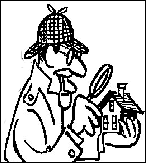
A standard home inspection is a visual examination of the physical structure and major interior systems of a home. An inspection could be compared to having a good mechanic look at a used car before you buy it. You should clearly understatnd that a home inspection is not to be confused with an appraisal, a building code inspection, a guarantee of any kind, or an insurance policy on the condition of the property.
During an inspection, the inspector will review the readily accessible exposed portions of the structure of the home, including the roof, the attic, walls, ceilings, floors, windows, doors, basement, and foundation as well as the heating/air conditioning systems, interior plumbing and electrical systems for potential problems.
Home inspections are not intended to point out every small problem or any invisible or latent defect in a home. Your should also realize that an inspector has broad general knowledge of your home, but may recommend that an expert be consulted if there is suspicion of a serious problem.
While not necessary, it is recommended that the buyer be present for the inspection. This allows the buyer to observe the inspector, ask questions directly, and obtain a better understanding of the condition of a home, how its systems work, and how to maintain it.
The written report may be easier to understand if the buyer was present during the inspection.
It's important that safe access and sufficient lighting are provided for the inspector. Make certain garages aren't locked up and that dogs are. Also, if a home is vacant, be certain that the utilities are on.
You'll receive a written report. If you have questions or concerns, you can go over them before you leave, or call at any time.









